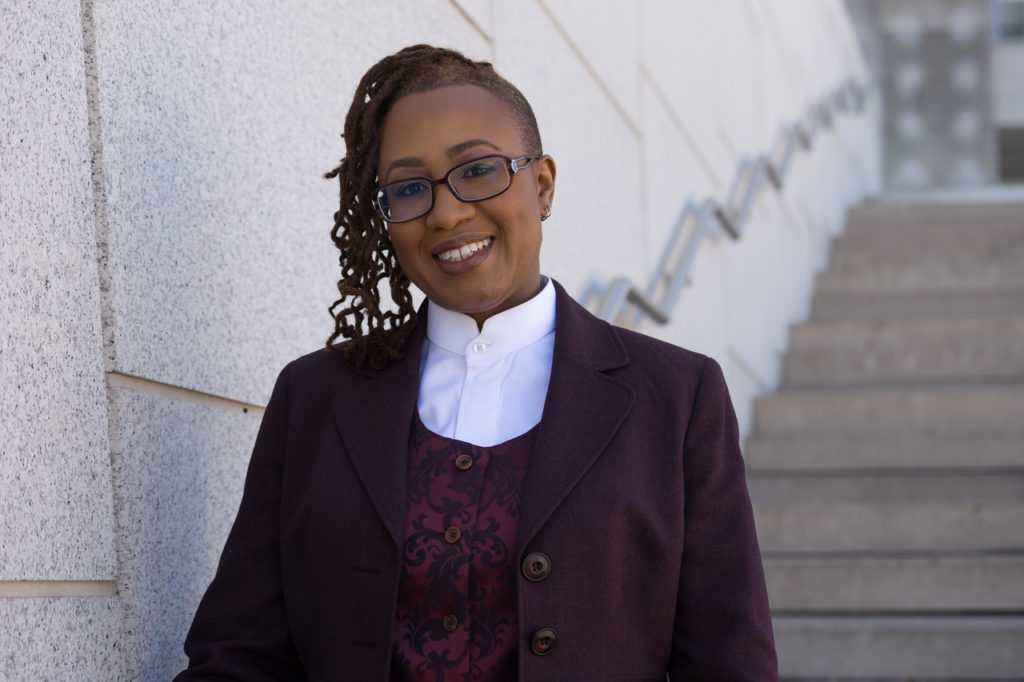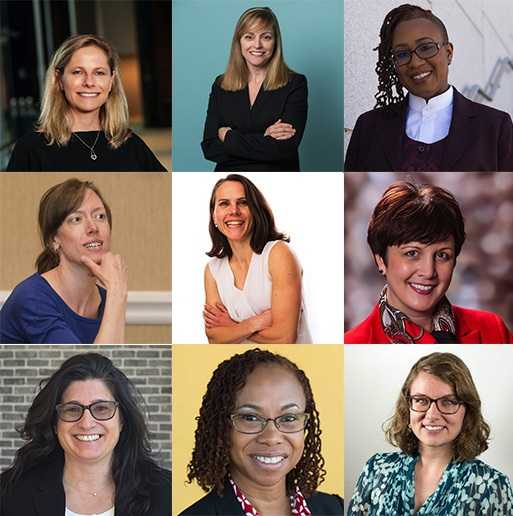In celebration of Women’s History Month, we’re highlighting women who are leading the way in positively transforming our communities through high-performance buildings. Meet Donna Hope, President at UHope-Consulting and an IMT alumna.

Why do energy-efficient and high-performing buildings matter to you?
I first got excited about energy-efficient buildings when IMT stationed me in the New York City Mayor’s Office of Sustainability to support new energy efficiency mandates through the Greener, Greater Buildings Plan (GGBP). I was previously the first benchmarking help center manager for the city, which was an amazing opportunity to work directly with building owners to respond to the new laws and gather data to guide valuable building improvements.
At the time, energy efficiency was new for the city and for me, too. My background is in environmental engineering, where my previous “job security” was constantly remediating toxic hazardous waste situations. I realized that I wanted my career to be more proactive about helping the environment and was looking for a meaningful change. New York City’s forward-looking action to reduce carbon emissions from buildings, which are some of the largest energy users in the city, was an ideal path forward for me to get involved.
Now, I am increasingly aware of the importance of buildings to successfully address climate change. In New York City, some of the most iconic buildings are also the largest energy users, but they don’t have to be. Beyond commercial buildings, there are also opportunities to engage residents and homeowners to take responsibility for their energy use in the spaces where they live and work. We often take electricity and water for granted, but they are not unlimited and they are not free. There are plenty of reasons to act.
What are you most proud of in your career related to energy and efficiency?
One of my most motivating accomplishments was one of my first internships. I was accepted to a program intended to increase engagement of students of color on climate change and worked on climatology research at the GISS Institute on Climate and Planets led by NASA and Columbia University’s Earth Institute. I’m extremely proud of my work there alongside inspiring industry experts studying the impacts of increased extreme weather events exacerbated by climate change. This early opportunity established several critical foundations and ideas for me that continue to drive my career.
I am also very proud of my work with IMT in New York City. Before energy benchmarking, very few people had paid attention to the energy use in our buildings and there was no motivation to change. Once we started paying attention, we achieved a comprehensive understanding of how our buildings operate and how they could do better to make energy less of a burden for occupants and the environment.
Today, I build on these experiences throughout the environmental field to guide increased diversity, equity, and inclusion in our industry. In some cities, the vast majority of the population still spends a significant portion of income on electricity bills, and this disproportionately affects low- to moderate-income families and communities of color. I’m working to address that energy burden and identify new ways to lower it.
The theme of this year’s International Women’s Day was “Think Equal, Build Smart, Innovate for Change.” What is the change or market transformation you would most like to see in the energy industry?
I want to see a drastic increase in the number of diverse perspectives represented in energy conversations, and I want to see more action on those conversations.
From national conferences to local community energy policy discussions, there is a shortage of diversity and inclusion—across race, ethnicity, religion, sexual orientation, gender identity, age, and socioeconomic class. Without this diversity of representation, not all experiences, needs, and concerns are accounted for, and they are often omitted from policy considerations. This is why I now primarily work on diversity, equity, and inclusion in environmental fields to address this systemic problem. But, it can’t just be left up to the “marginalized” people of color, women, LGBTQ, and youth demographics. Allies need to step up in their siloed spaces and advocate and demand to work together in solidarity and mutuality, as stated in the Jemez Principles for Democratic Organizing. This is the type of forward-thinking, equitable, smart, and innovative change that must become the norm.
What is your advice for women in the energy and sustainability industries?
I recently learned that of all the engineers in the U.S., only 2 percent are Black women. I feel proud to be one of them, but that is such a low number and I know there is so much potential for growth. So, I say this to women and particularly women of color:
Stay the course. Seek out peers and teachers. If you are in a position to mentor young women and girls, especially of color and LGBTQ, do it! We must prioritize mentorship to encourage and inspire them to stay the course and pursue higher education and leadership positions. Never underestimate the power of showing up in your full truth. Volunteer and get involved in organizations where you can inspire young women, and tell them to keep going. We need them and their voices.
